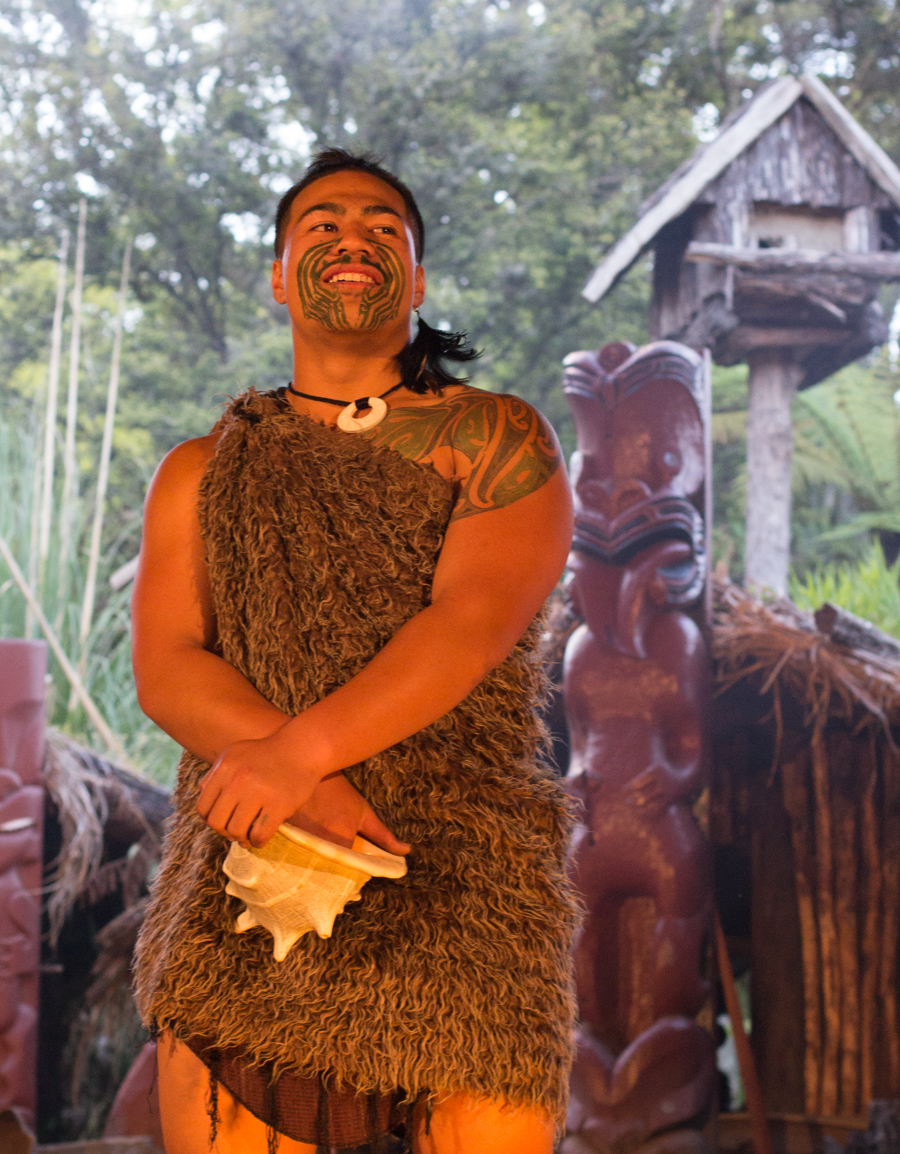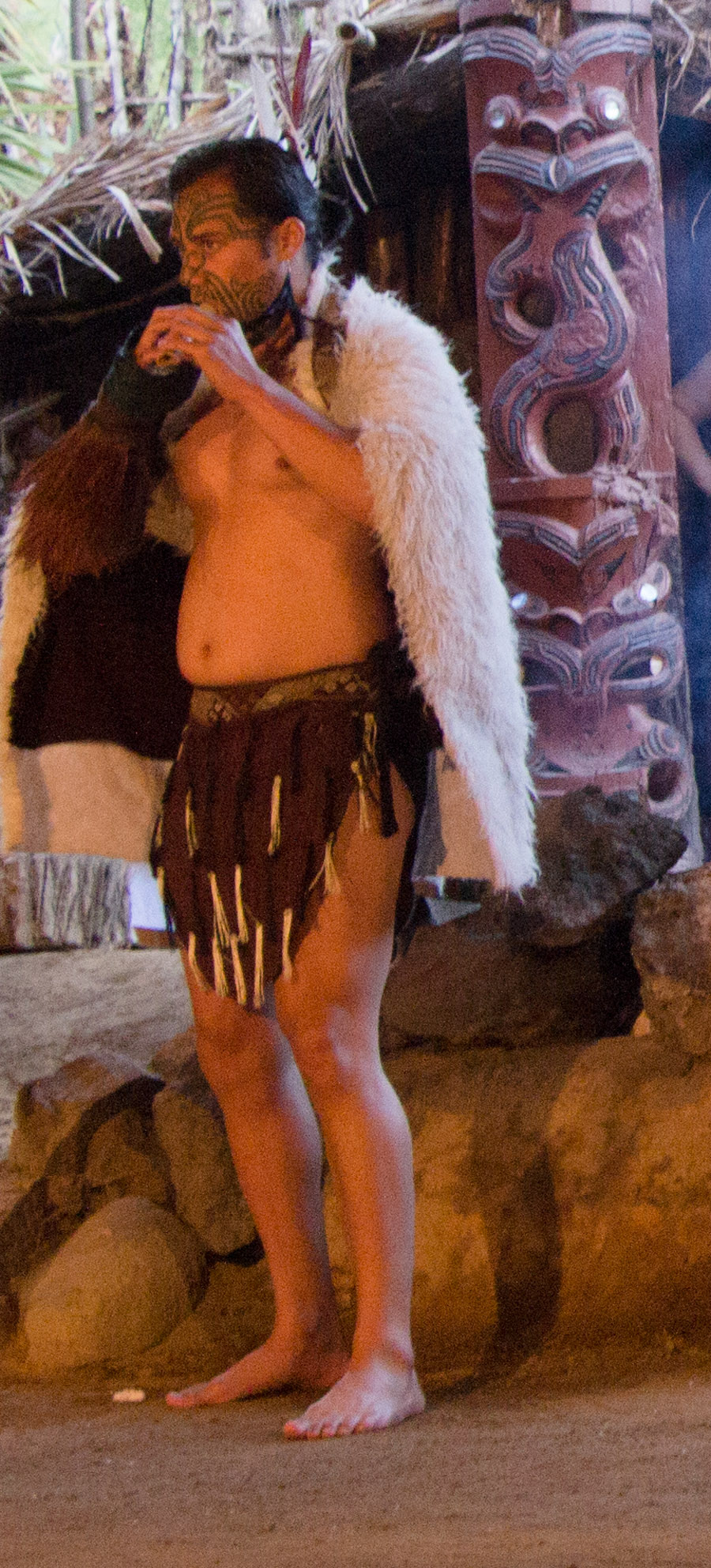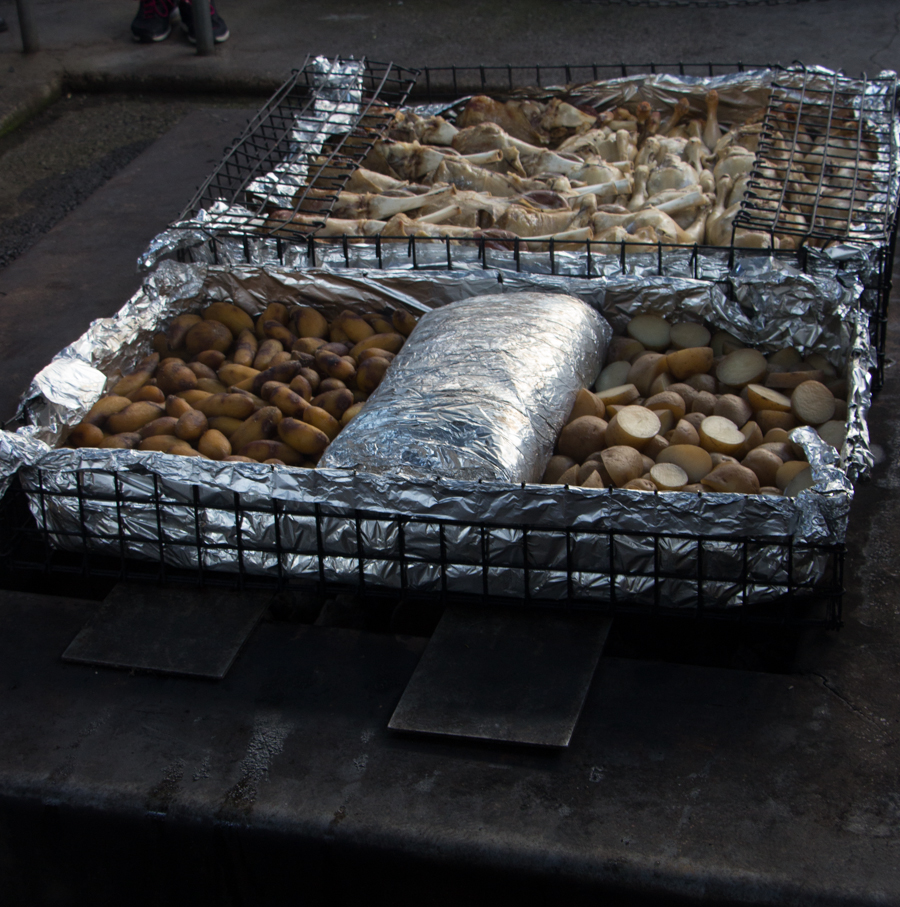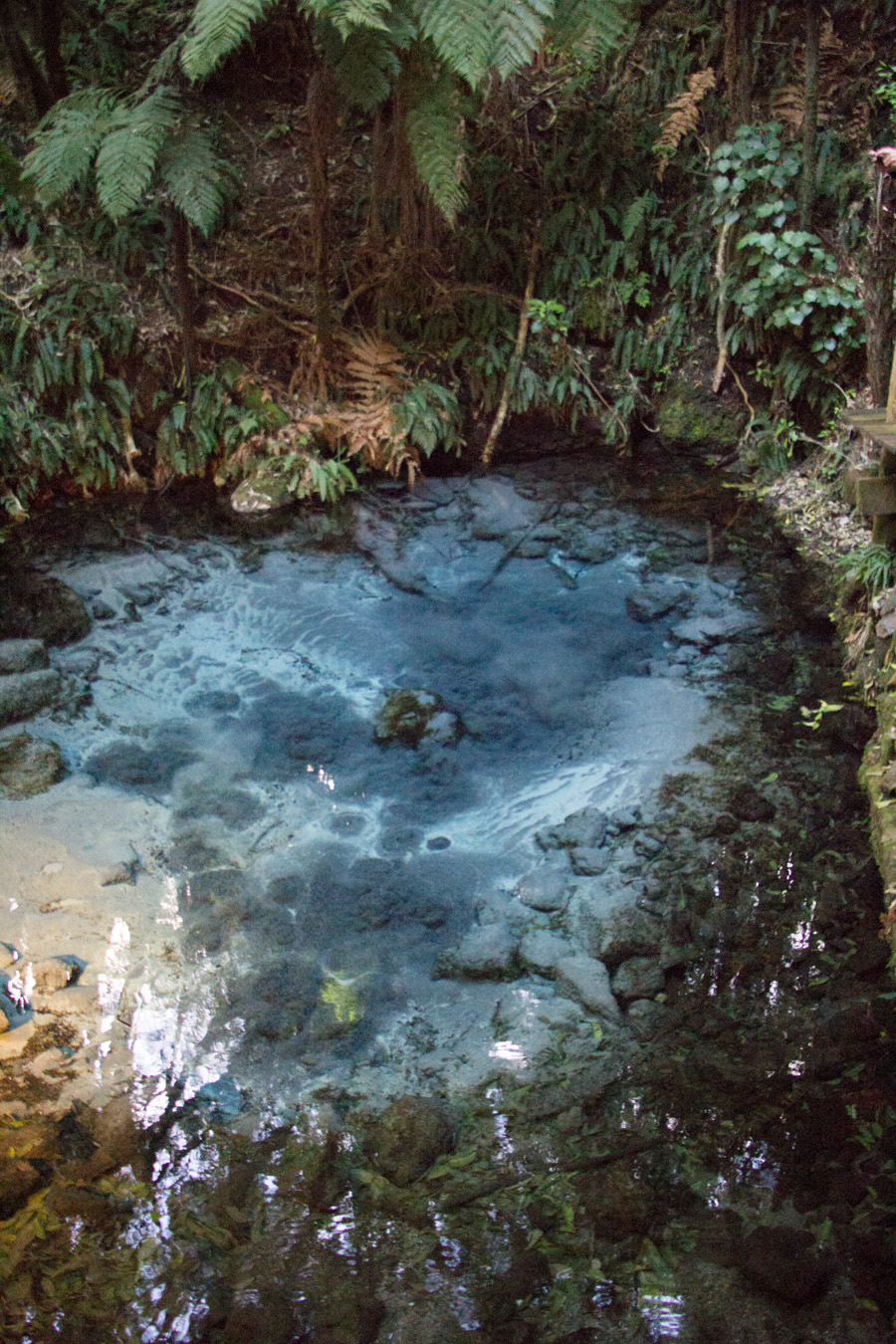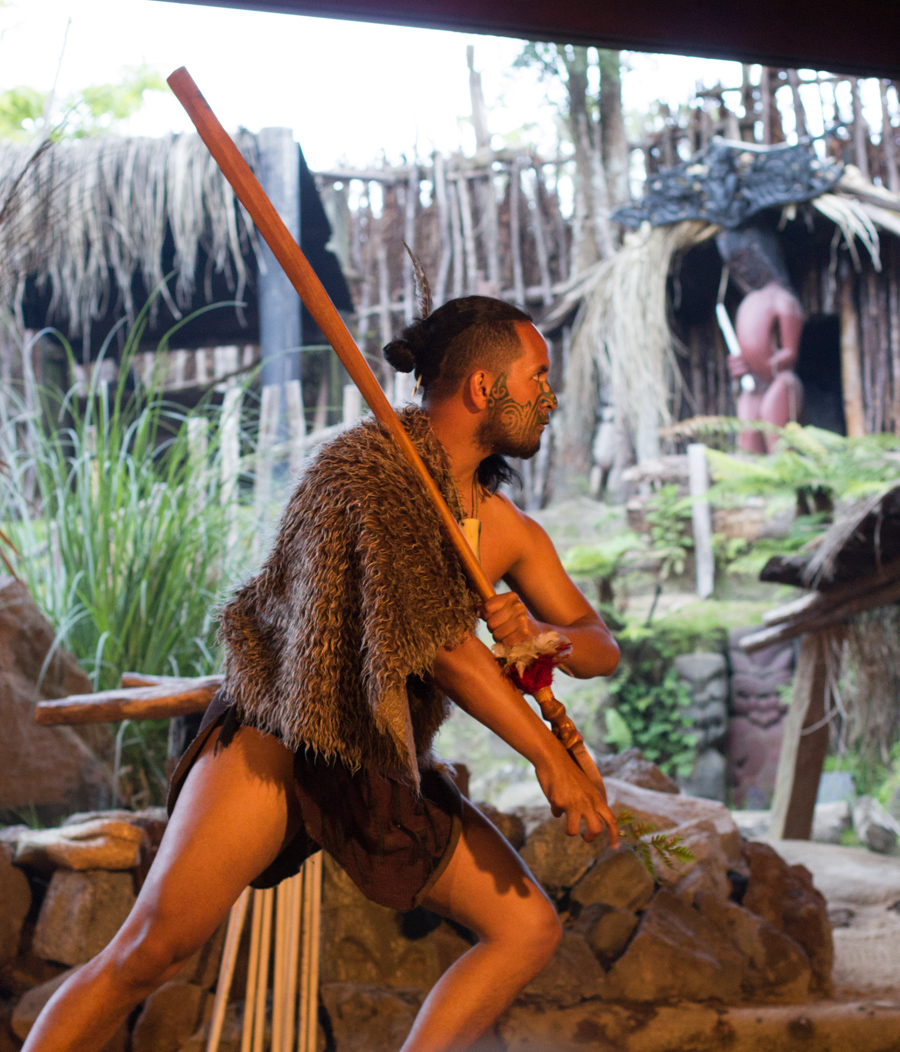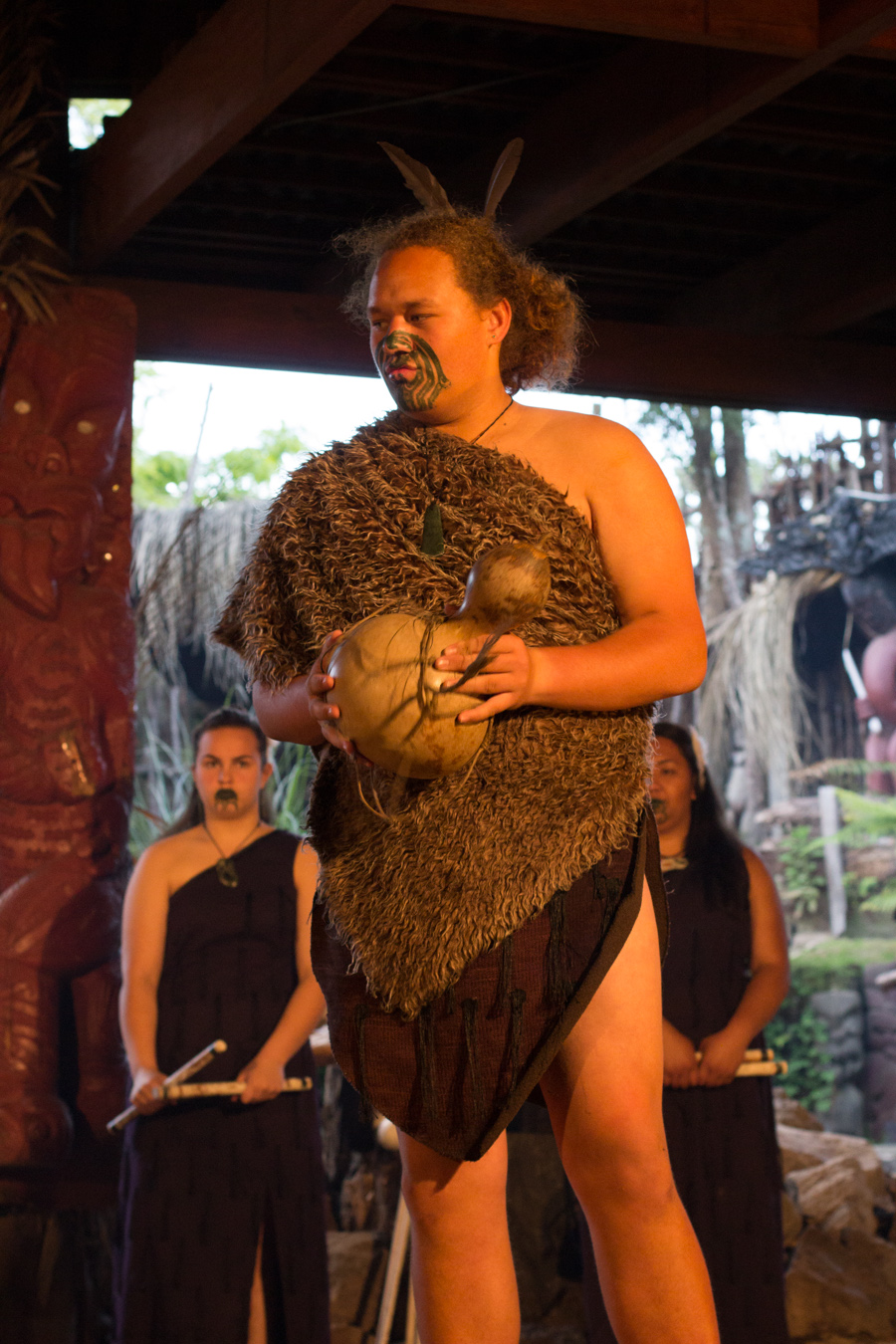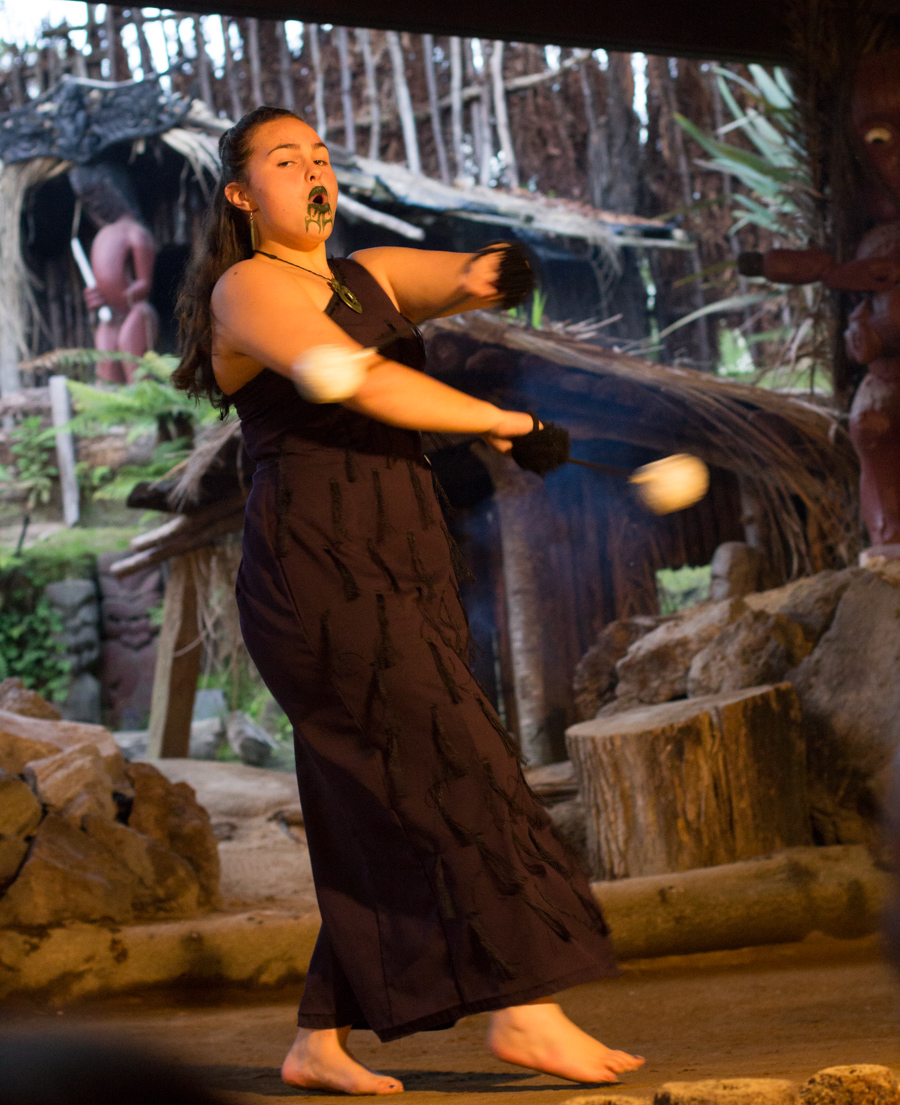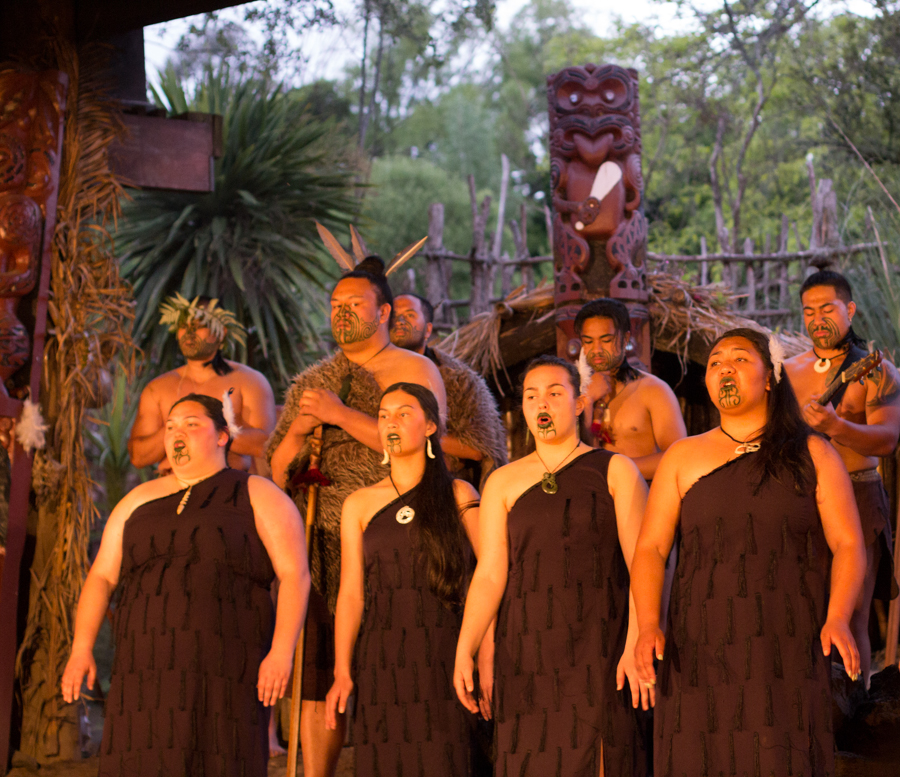Mitai Maori Village
Saturday 5 November, 2016
The indigenous peoples of New Zealand are called Maori. They came from other Polynesian islands, most recently Tahiti, perhaps a thousand years ago (although the date is disputed). The Maori were fierce warriors and were more successful than other indigenous peoples at defending their land upon the arrival of the Europeans. The chief signed the Treaty of Waitangi with the British authorities in 1840. The treaty, of course, did not resolve all issues; the Maori had to continue fighting to enforce it, and its interpretation is still controversial today. However, in an altogether too familiar story, tough as they were, the Maori were defenseless against European diseases, and they all nearly died out. The descendents of the survivors live today as about ten percent of the New Zealand population.
Urbanization of course robbed the Maori of much of their traditional culture. Like the natives of North America, they are attempting to revive and preserve it. Part of this involves rebuilding their villages as tourist attractions, and performing traditional songs and dances in costume for visitors. This sounded somewhat Disnefied to me, and I had not made plans to visit a village, but Jo in Auckland encouraged us to go. We decided that it would be an opportunity to learn something and provide some support to the Maori. Our travel agent made us last-minute reservations at the Mitai Maori Village. This, we were told, was the less touristy of the two Maori villages near Rotorua.
The Maori chief playing a pipe.
The last-minute style of arranging the visit meant that, while the reservations were successfully made, our pickup from the motel failed. Donna, the desk clerk at the hotel, figured out which village we were going to and called them. Donna was great, and honestly, the service everywhere in New Zealand has been so fantastic that it will be uncomfortable to return to the surly United States. Eventually, Eric had to drive us to the village, but it was only a short ten-minute drive, and Donna printed Google map directions for us. We were given a 15% discount and free drinks for our difficulties. We did miss the introduction, but I got the impression that it was rather hokey. They apparently asked what country everyone was from, and determined that 21 different countries were represented among the (very large!) group. Then they had selected two gray-haired men, one from the US and one from Belgium, to be our "chiefs" and represent all of us in a mock battle challenge with the Maori warriors.
First, they introduced the hangi, our dinner, cooked in the traditional Maori way of placing the food into their readily-available geothermal sources for a few hours. As you can see, most of the food was fairly, well, American. There was lamb, chicken, potatoes, and even, since this was November, stuffing. I was told that, traditionally, the Maori ate vegetables, often uncooked, and the Moa, an ostrich-sized bird that is now extinct. So, now they serve American food.
Next, we were led through the silver fern forest to the sacred Maori hot spring. The warriors came down the stream in a boat, chanting.
Next, we were led into a theater. We were joined by Jaz, from Cleveland, who was willing to sit next to us in a single seat and make new friends. Our chiefs were brought up onto the stage. They were, in turn, challenged by chanting, spear-wielding Maori warriors in traditional costume.
Each of our chiefs picked up a feather and offered it to the Maori warriors in peace. The peace offering was then ritually accepted by the Maori warrior. Our chiefs thanked the Maori chief for welcoming us into the village. The Belgian chief thanked the Maori chief for Maori assistance in fighting the Germans during World War II. The American chief joked that, if things went poorly for the US on the following Tuesday (Election Day), he might be seeking a new place to live in the other 20 countries represented. This engendered much applause from the primarily American audience.
The rest of the show consisted of music, dance, and cultural explanations. The Maori continually shake their hands to create energy during performance, and we were invited to try shaking ours. The performers presented several Maori musical instruments, and the chief had us repeat the names of each of them in the Maori language.
"This is our percussion instrument," the chief explained. "Can you say, 'percussion instrument?'"
The women did a poi spinning performance, but not with actual fire. The chief told us that the words to the song said, "Your boyfriend is no good for you, come along with me instead."
The chief explained the traditional aggressive displays of the warriors, with their shouted chants, protruding tongues, and bared teeth. "This is to communicate, 'You look very good to eat, and you belong in my belly.'" I found this to be a surprising display of honesty.
The chief told us that there had been 70 Maori tribes on the North Island, and far fewer on the South Island, and that different tribes had frequently made war upon each other. The coming of Christianity unified the tribes. So, the Maori are trying to re-create some of their traditional culture while maintaining the Christianity that was introduced to them by European missionaries.
The chief explained that the traditional Maori facial tattoos all represented flying creatures. The women are allowed only two birds, one of which was an owl, on their chins. The men have four flying creatures but they have to earn them in succession, which is why the chief has tattoos all over his face, but the others only have them on the lower face. The men also have owls on their chins, a couple of other birds on their cheeks and noses, and then the chief has a bat on his forehead. The tattoos are never symmetrical, because the right side of the face represents one's father's family, and the left side represents one's mother's family. Traditionally, the men's faces were deeply cut for the application of the tattoos; some men died from the pain. Today, they are happy to have tattoo guns. At last, the chief confessed that he and the other performers did not actually bear facial tattoos; they painted their faces for the performance.
The final piece was a song sung by the whole group, hands shaking.
We sat in the dining room with Jaz and her other friends from Cleveland. Jaz had been talking to one of the Maori, and he had asked her for some soul food recipes. We enjoyed our very American food and even more American desserts (chocolate log with custard). We met some Swiss students who were spending several months in New Zealand to learn English.
At last, we were taken back into the fern forest to hear more about the Maori history and see the glow worms. Wow! The glow worms really glowed brightly! Not brightly enough to take a picture without a tripod, but it was quite exotic. Traditionally, the warrior told us, the women would bring their lovers out into the forest among the glow worms for better luck in becoming pregnant, and conceive their children by the light of the glow worms. On a recent tour, he told us, someone had asked whether the modern Maori continued this tradition. "I said, 'Yes,'" he proclaimed proudly.
The Mitai Maori Village definitely had more people than was strictly comfortable for the available space. While it was definitely a very touristy experience, I was glad we had done it. I was moved by the chief's heartfelt words about the Maori's attempts to revive some of their lost culture. It gave me more insight into the feelings to the feelings of indigenous peoples the world over, who have lost so very much. The Maori have been relatively lucky as indigenous peoples go. I wish them further luck in their efforts to keep some of their traditions alive in a difficult modern world.
On to Waimangu Volcanic Valley.
